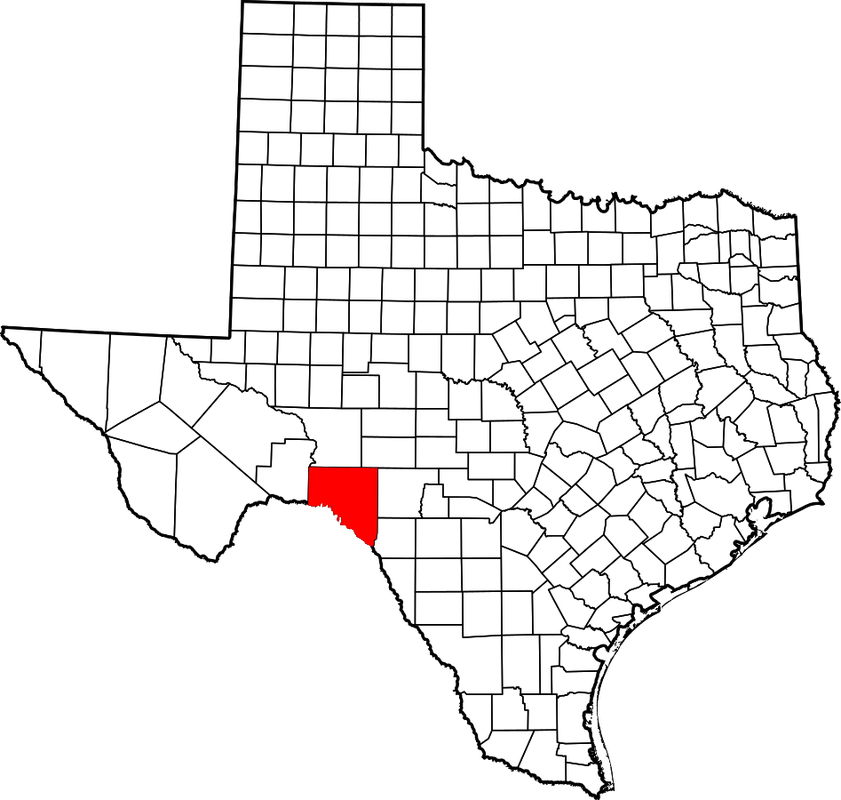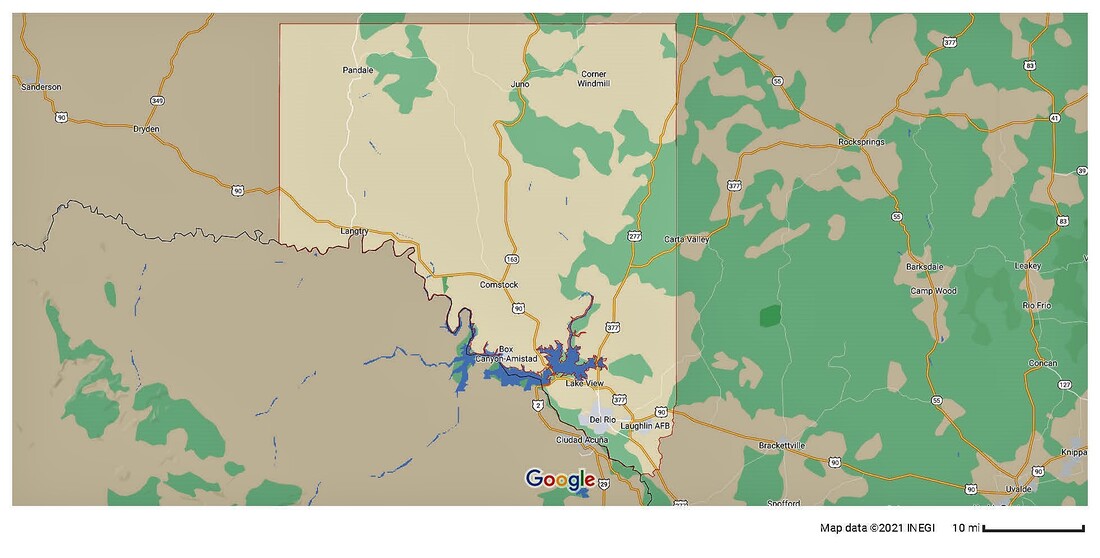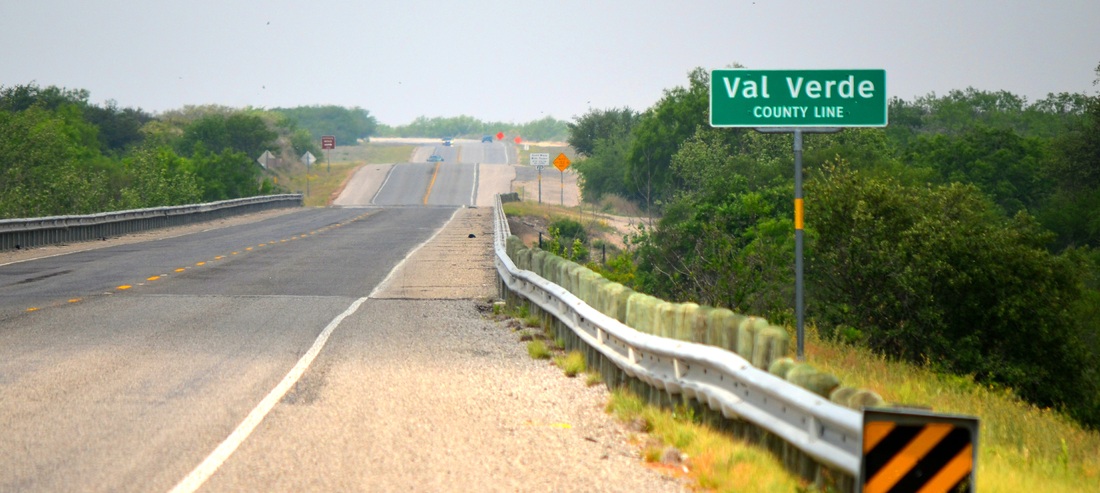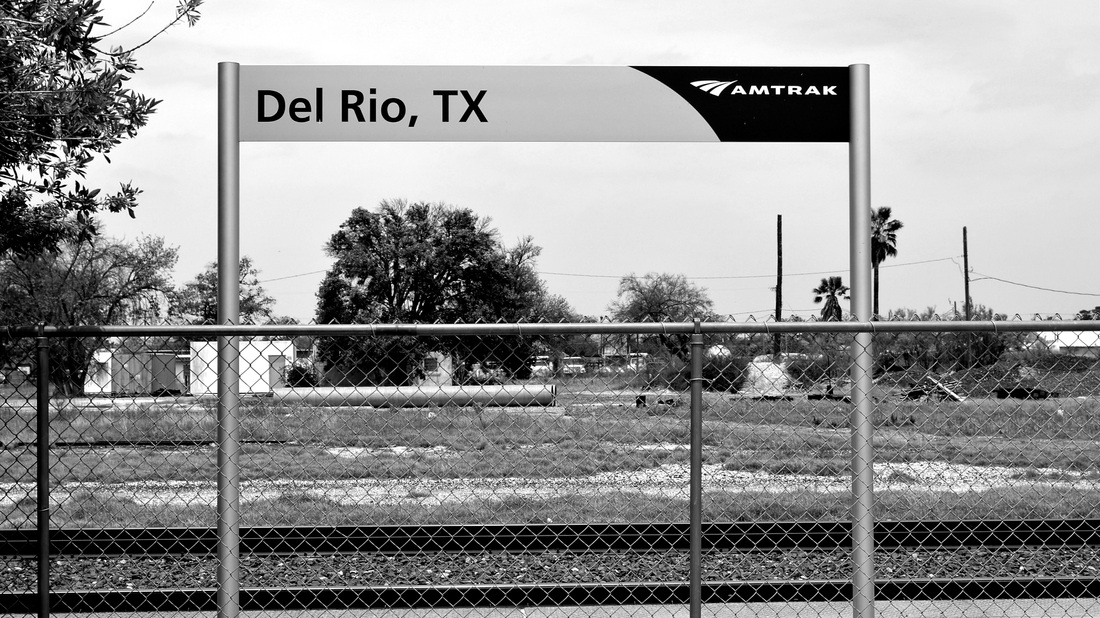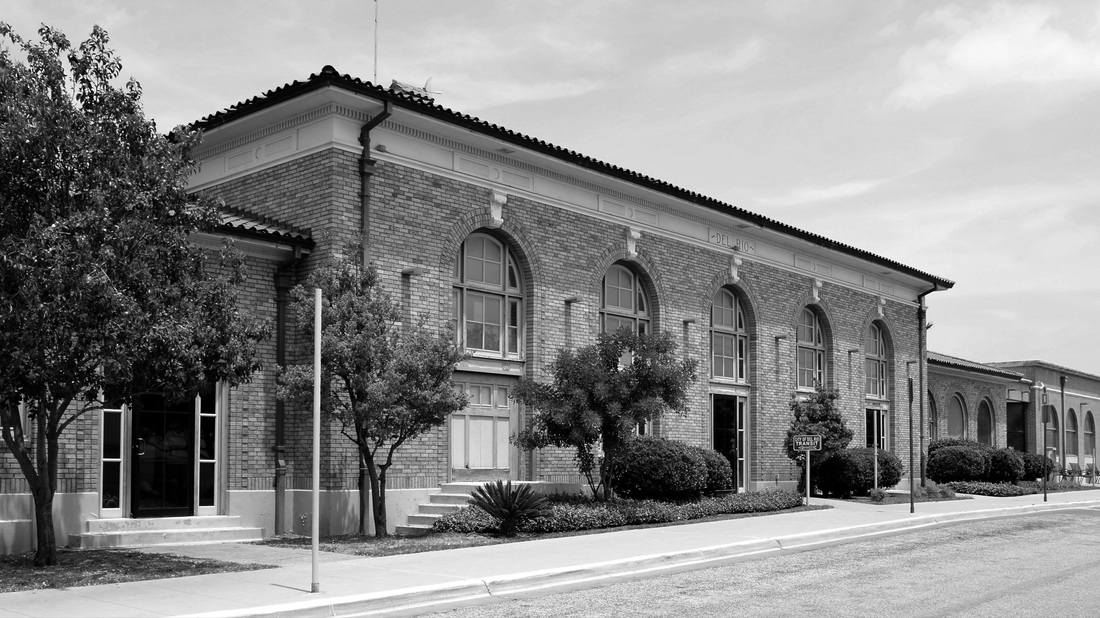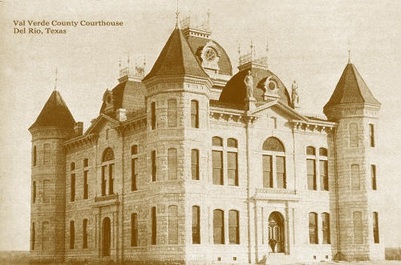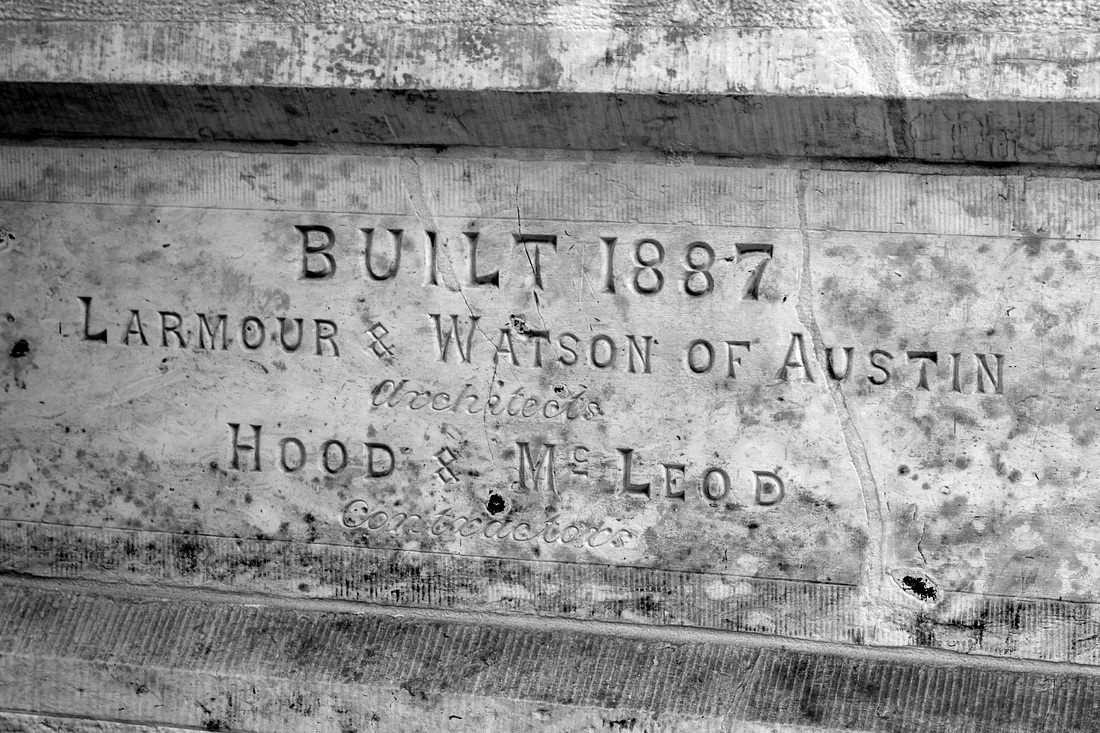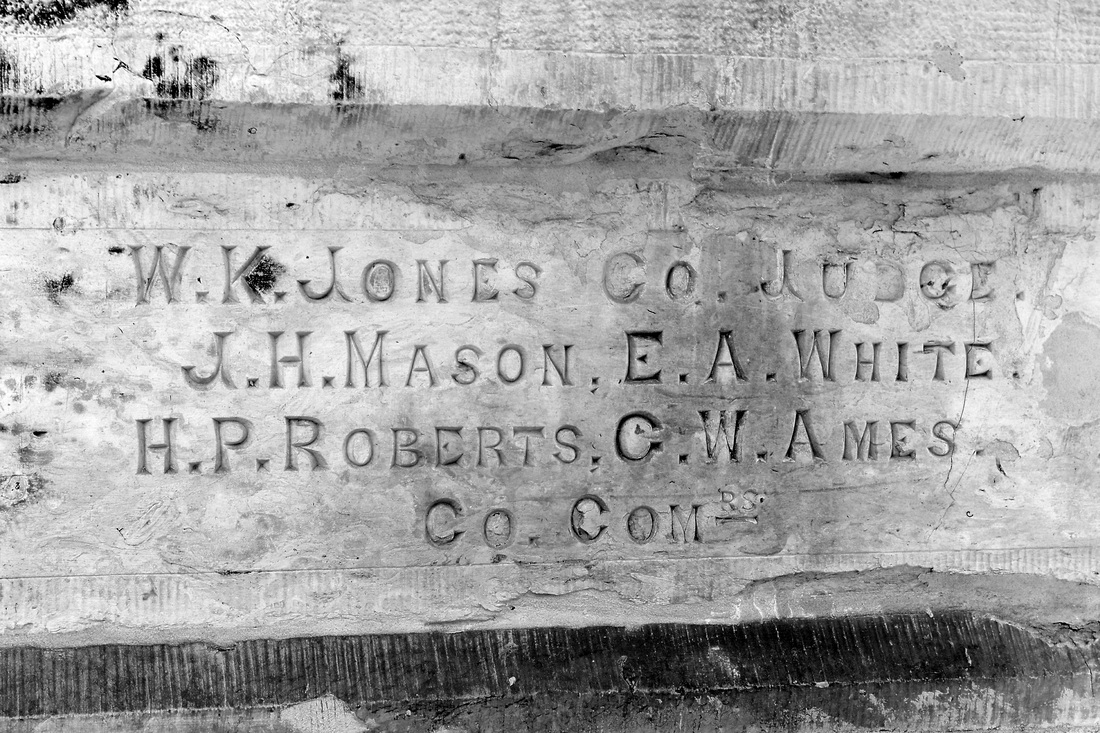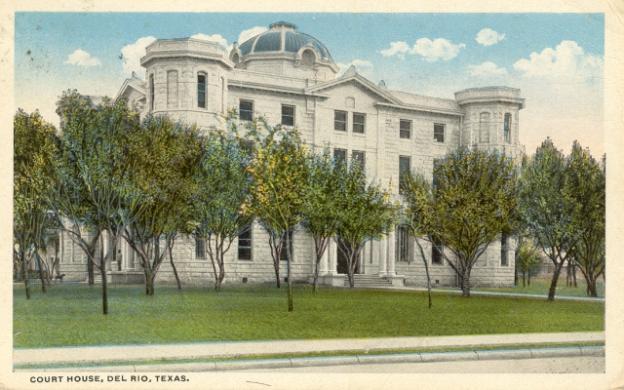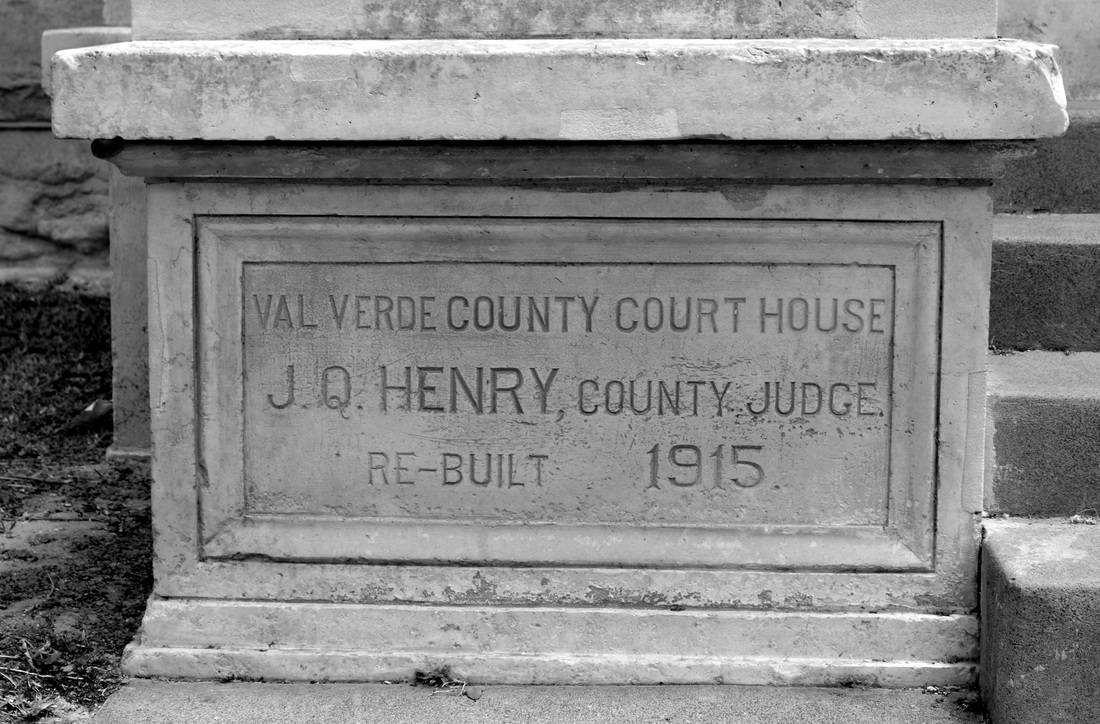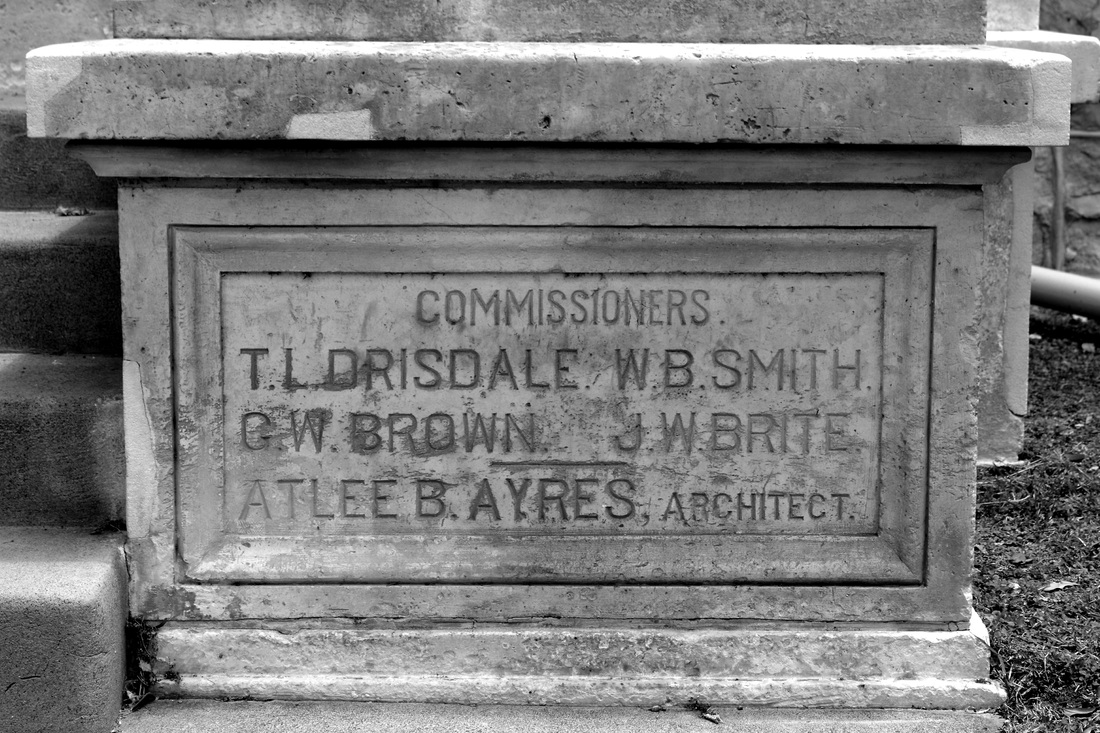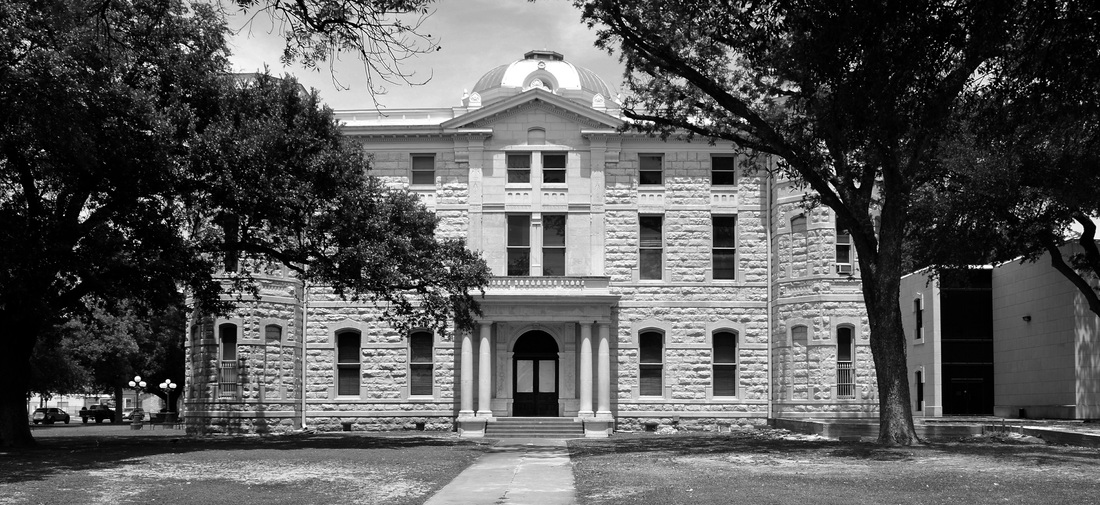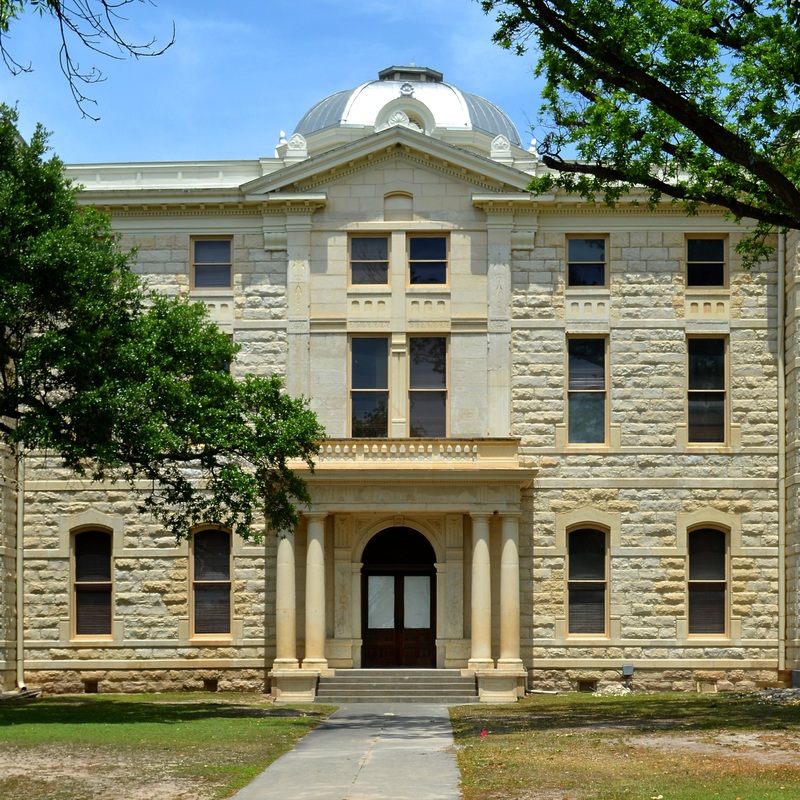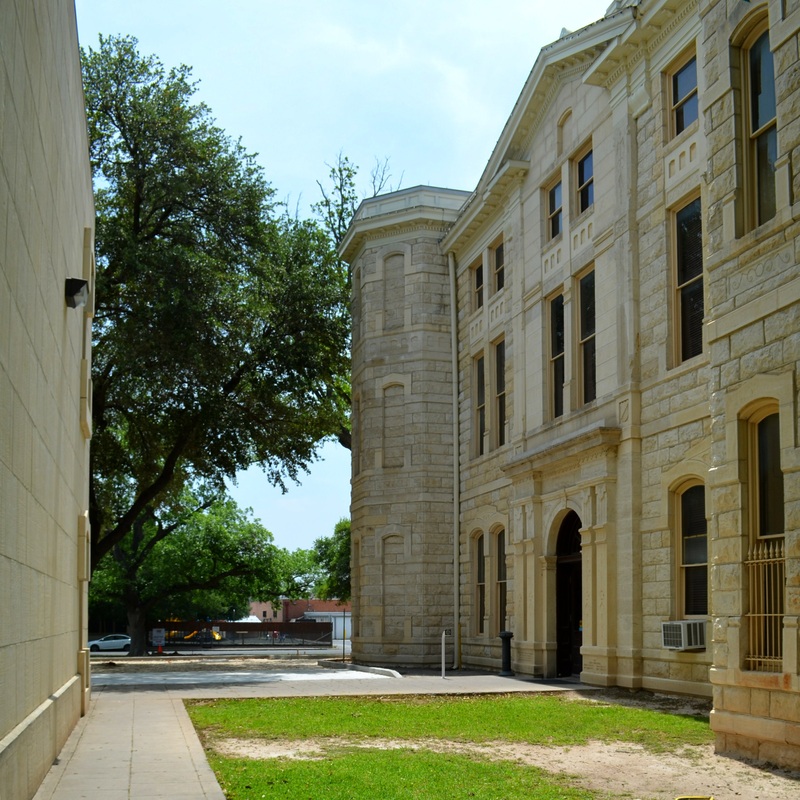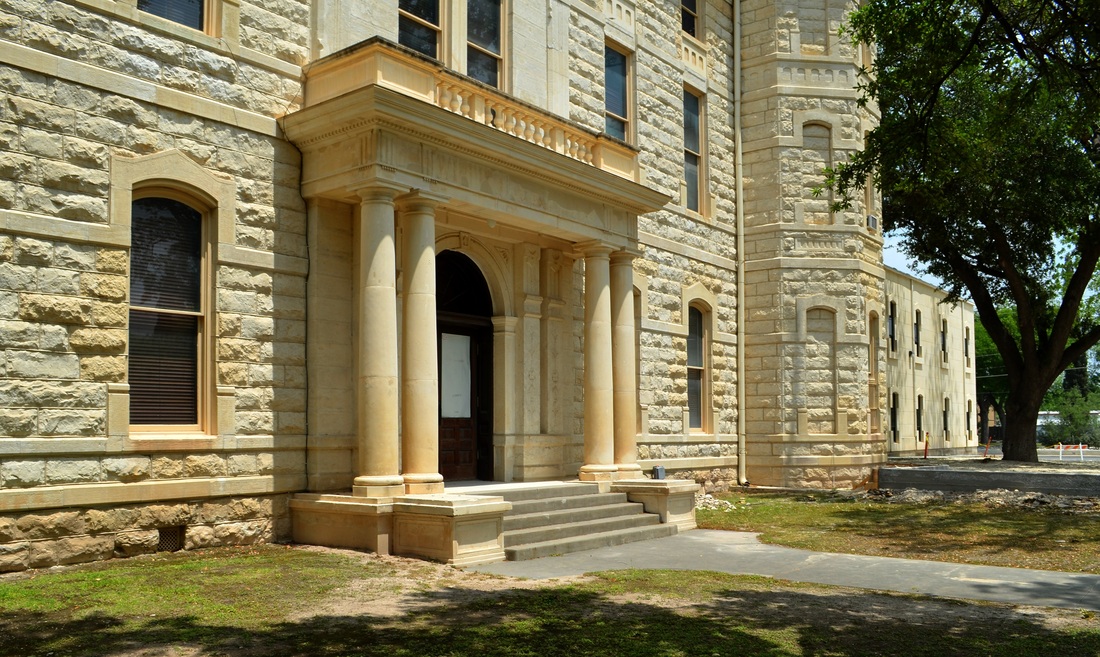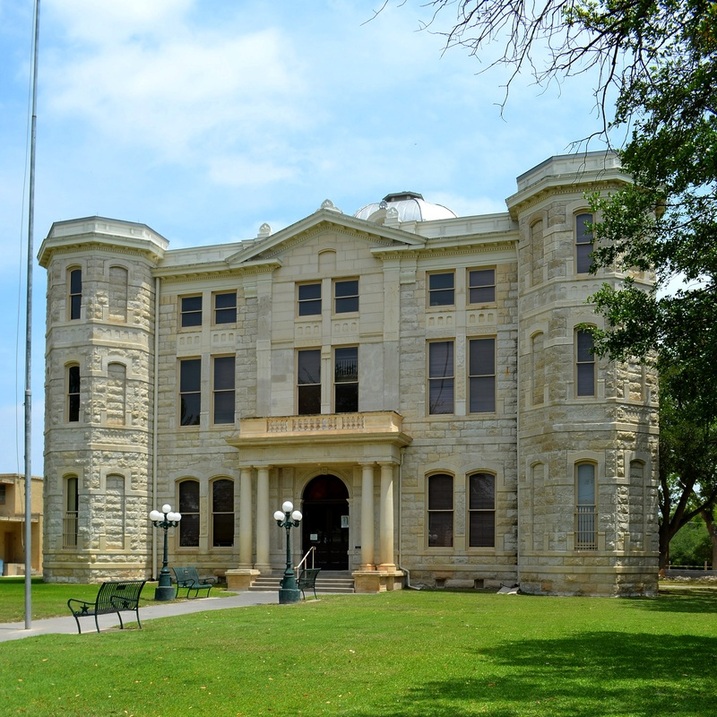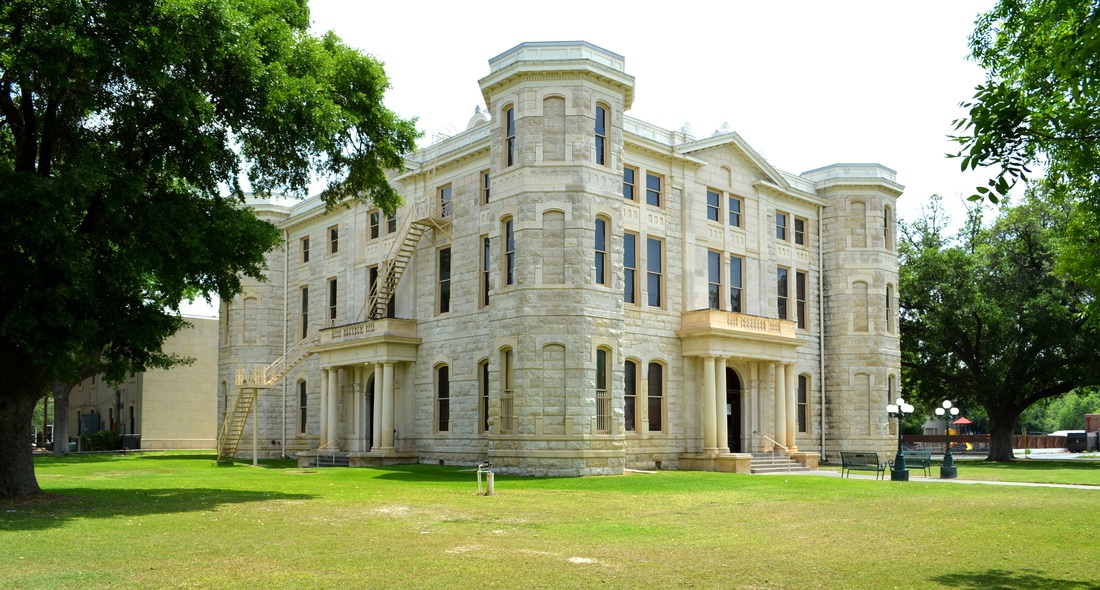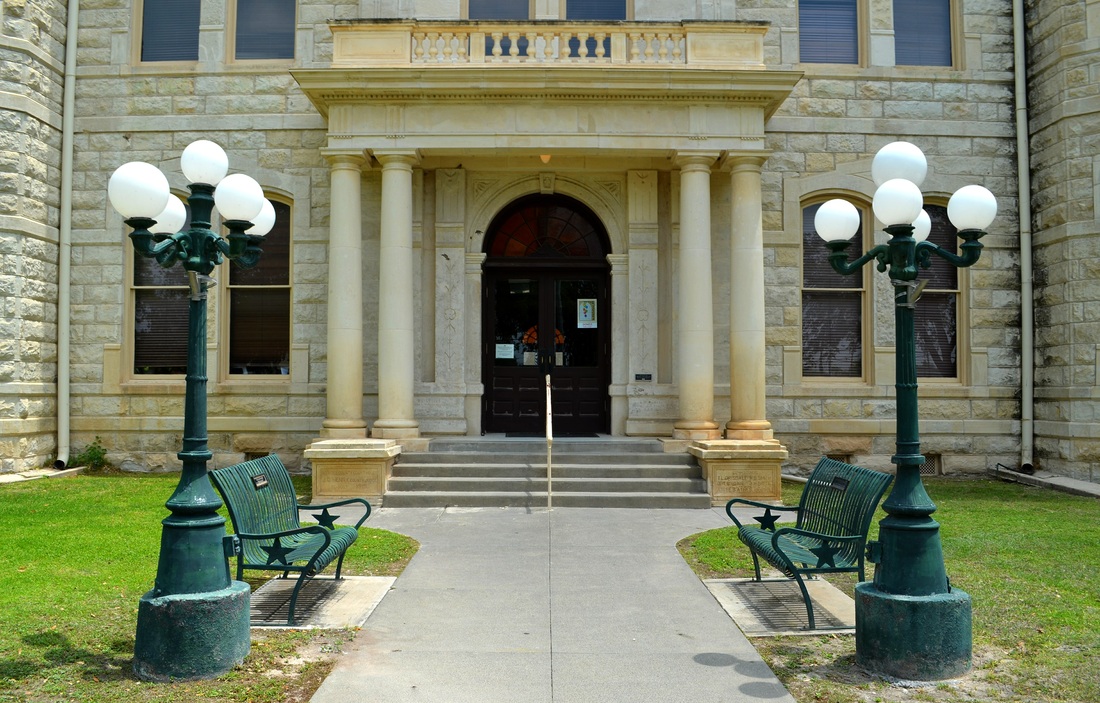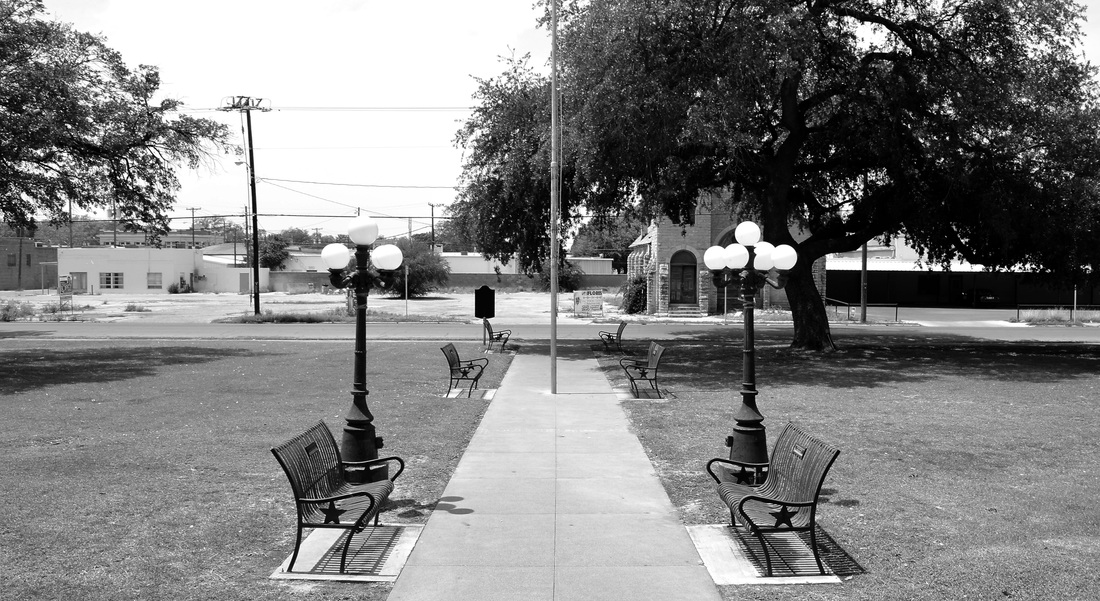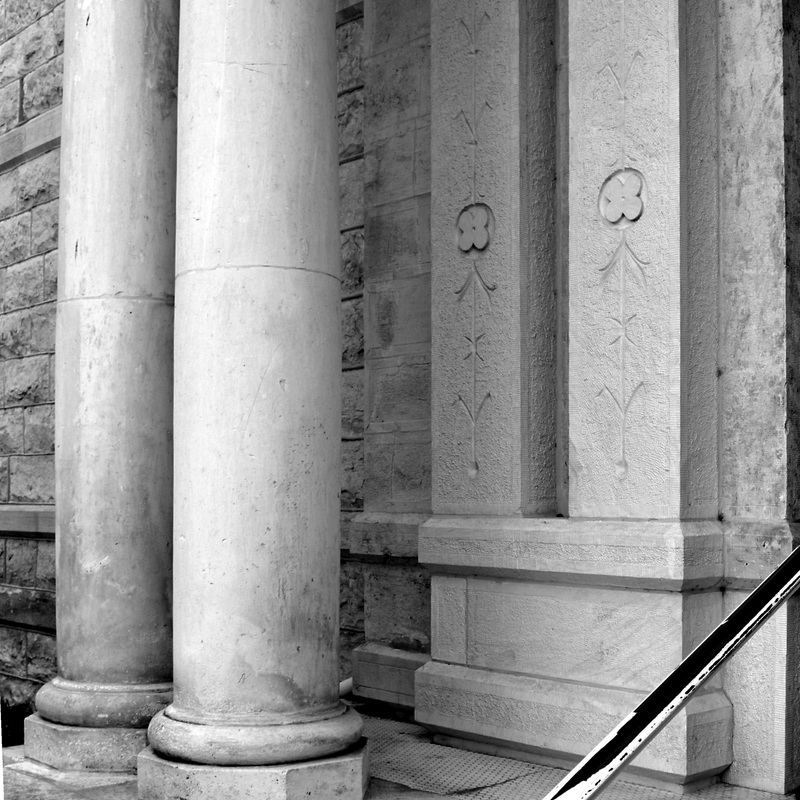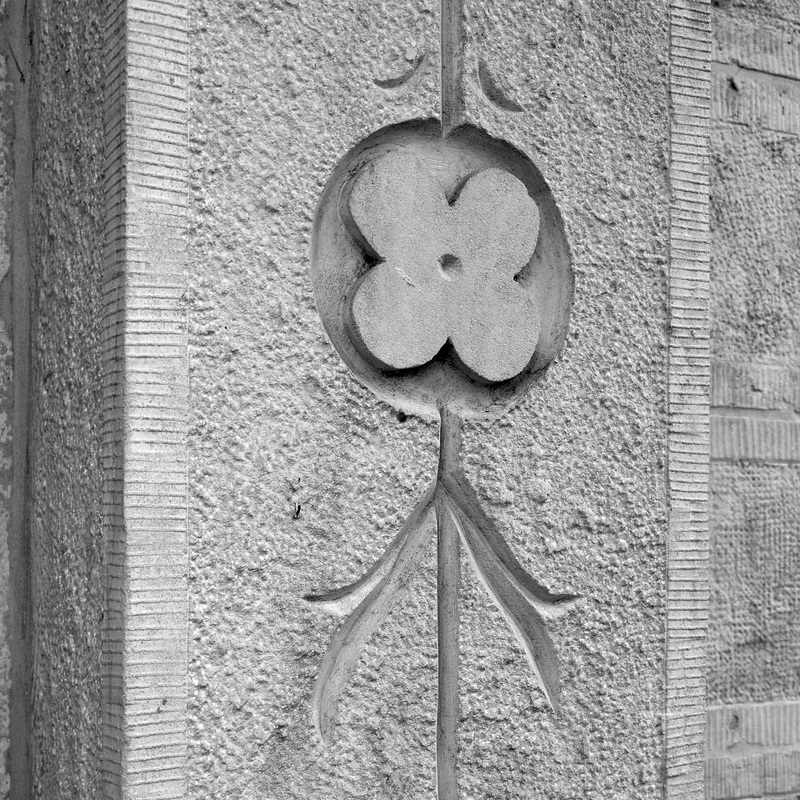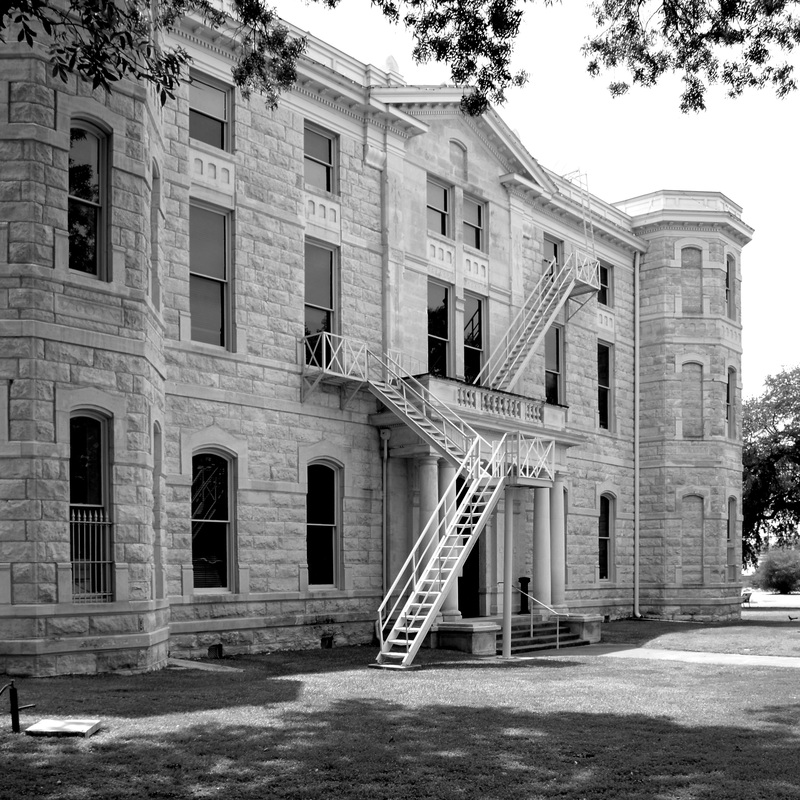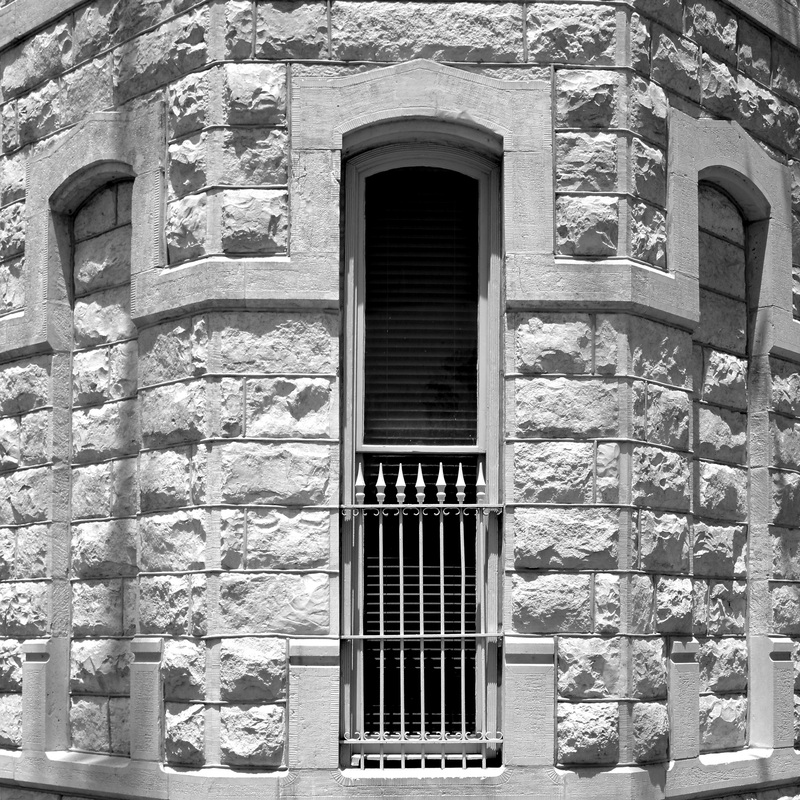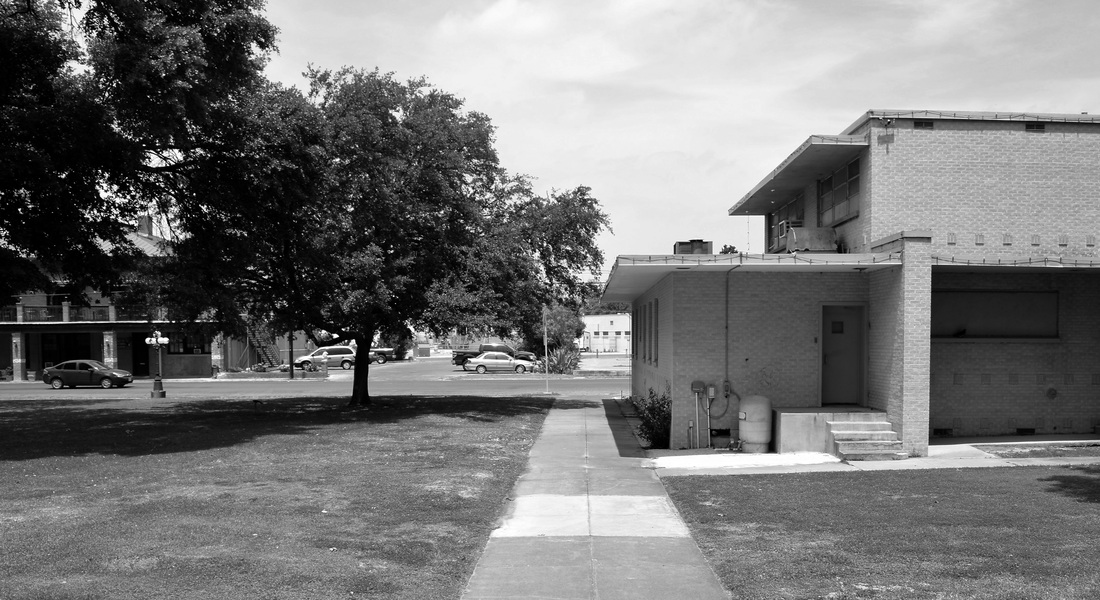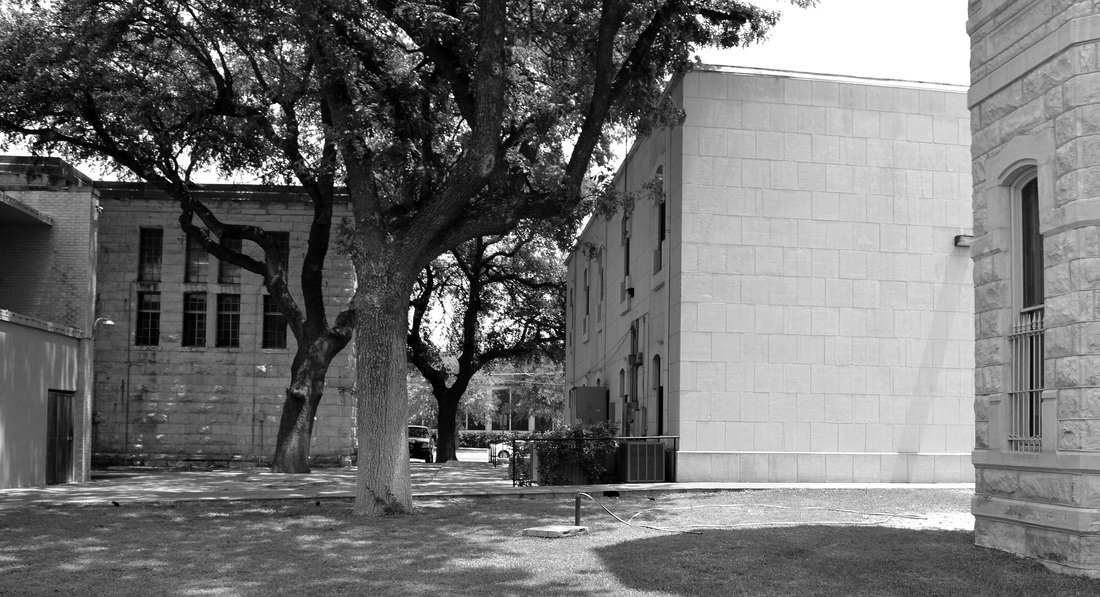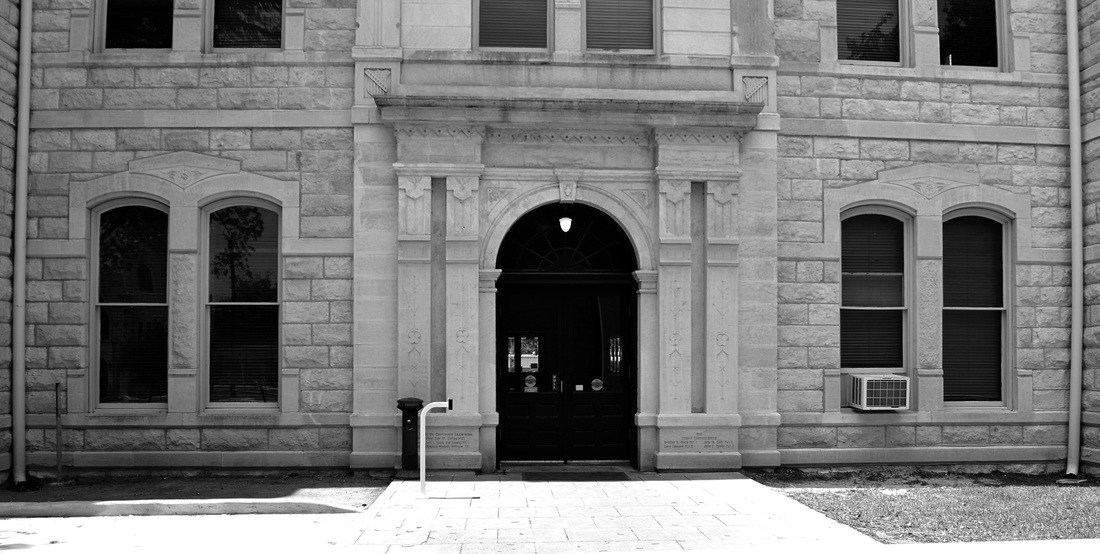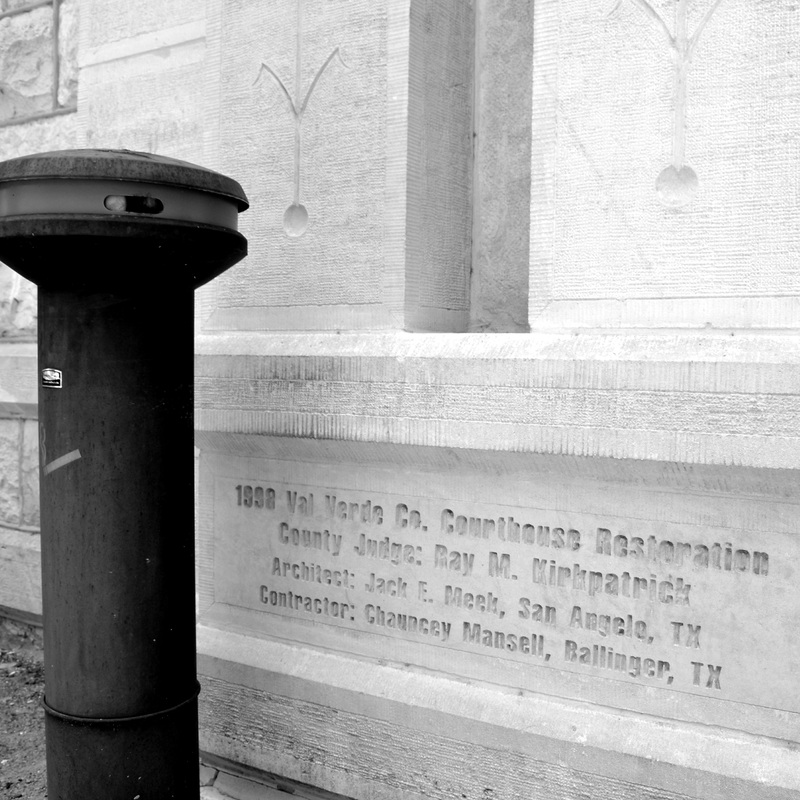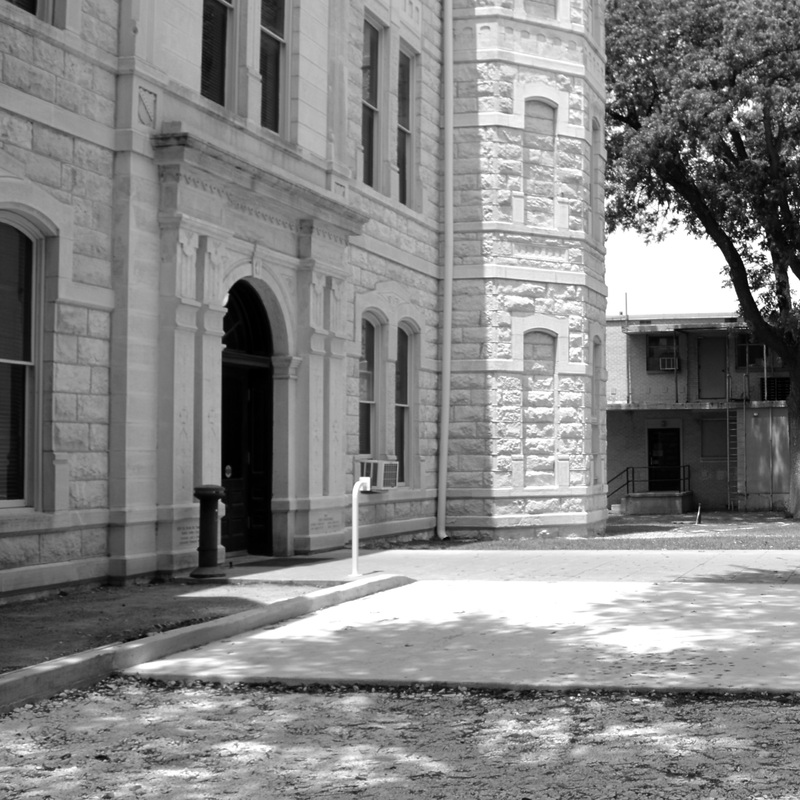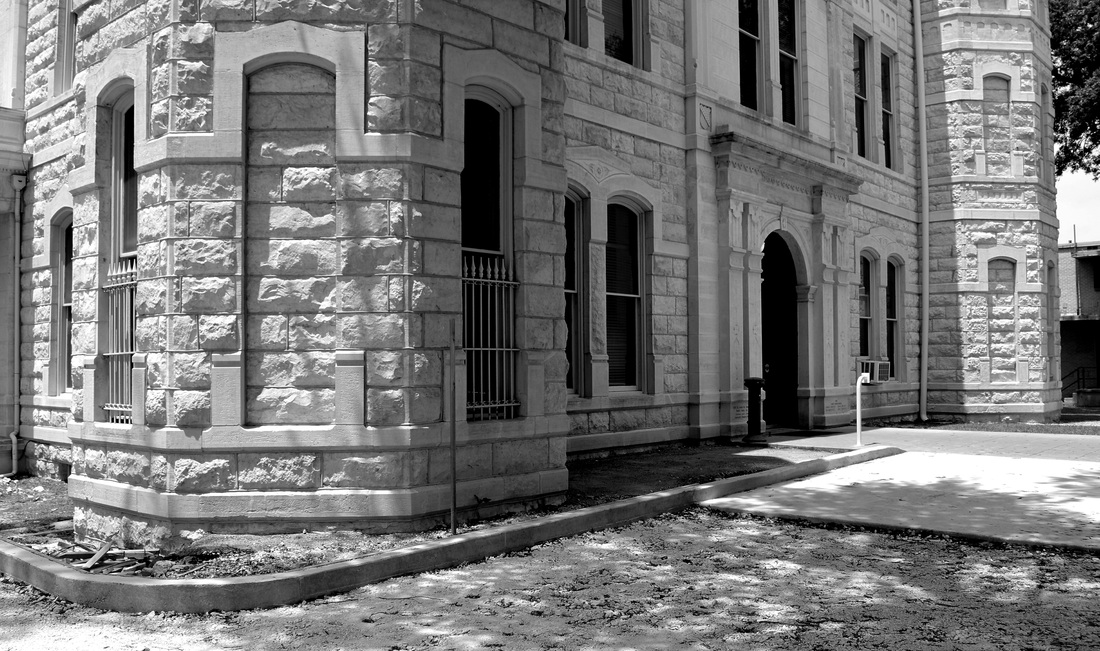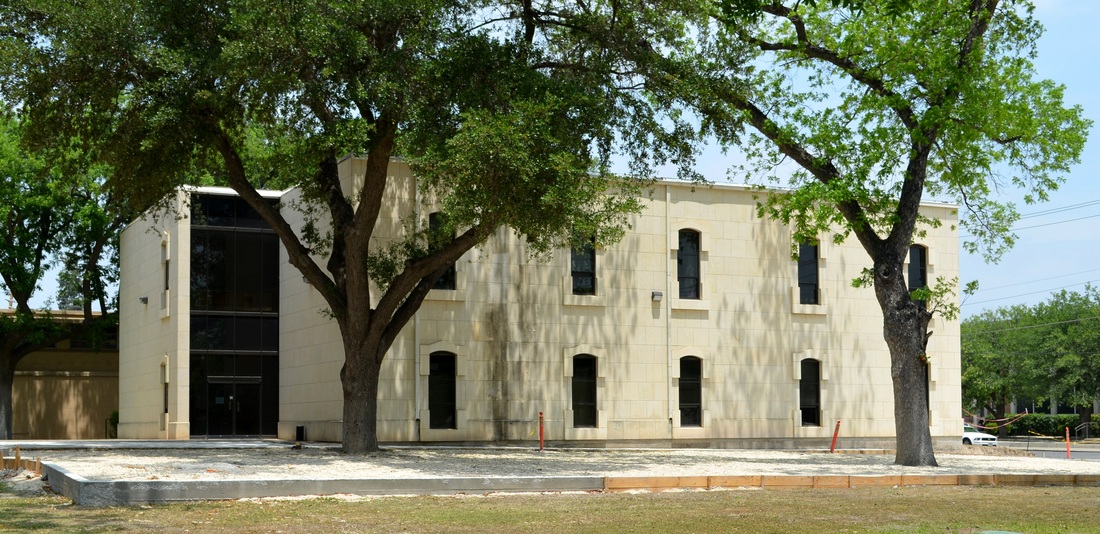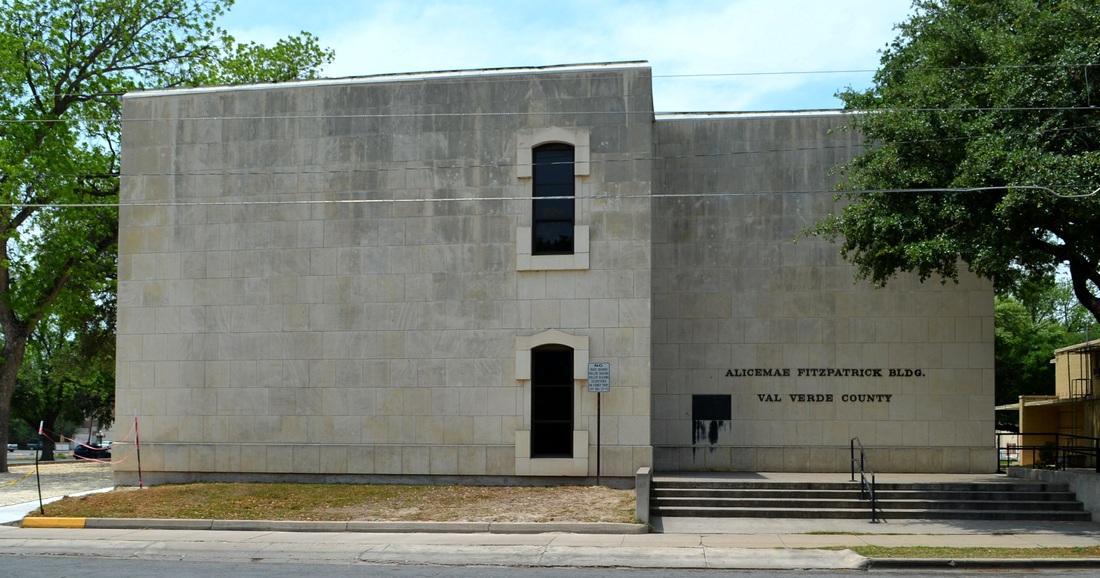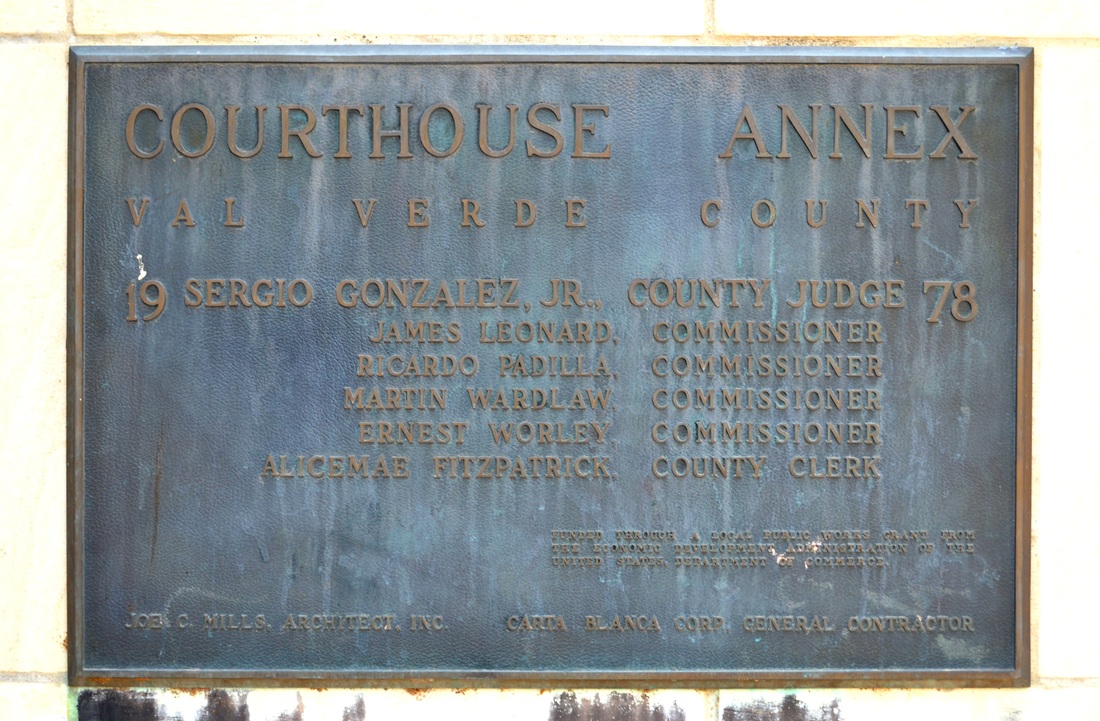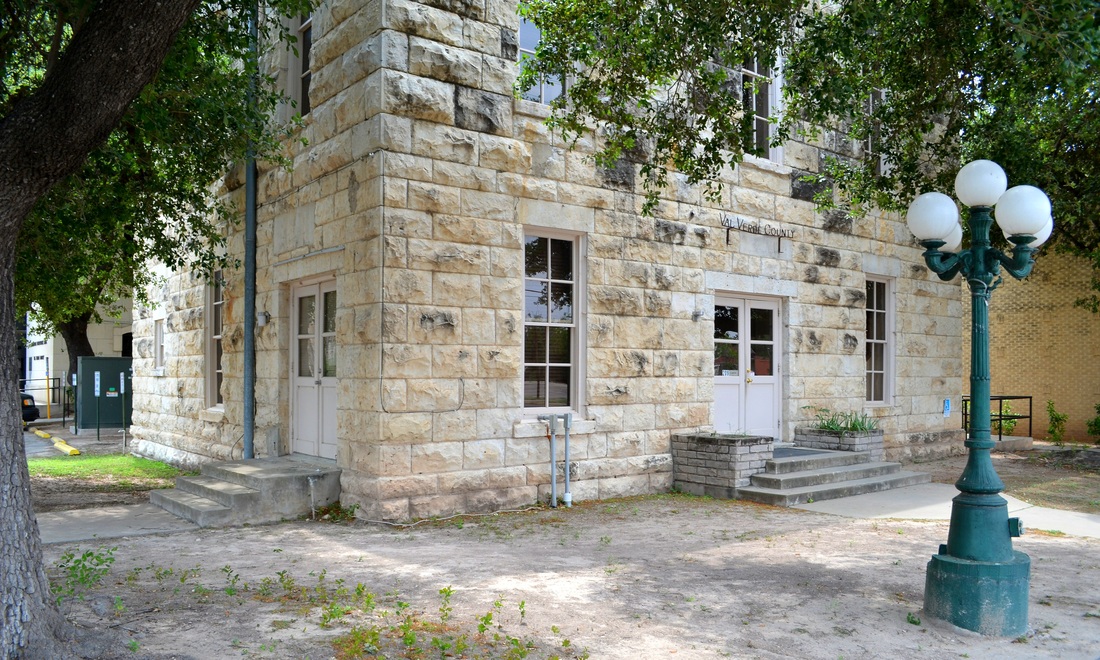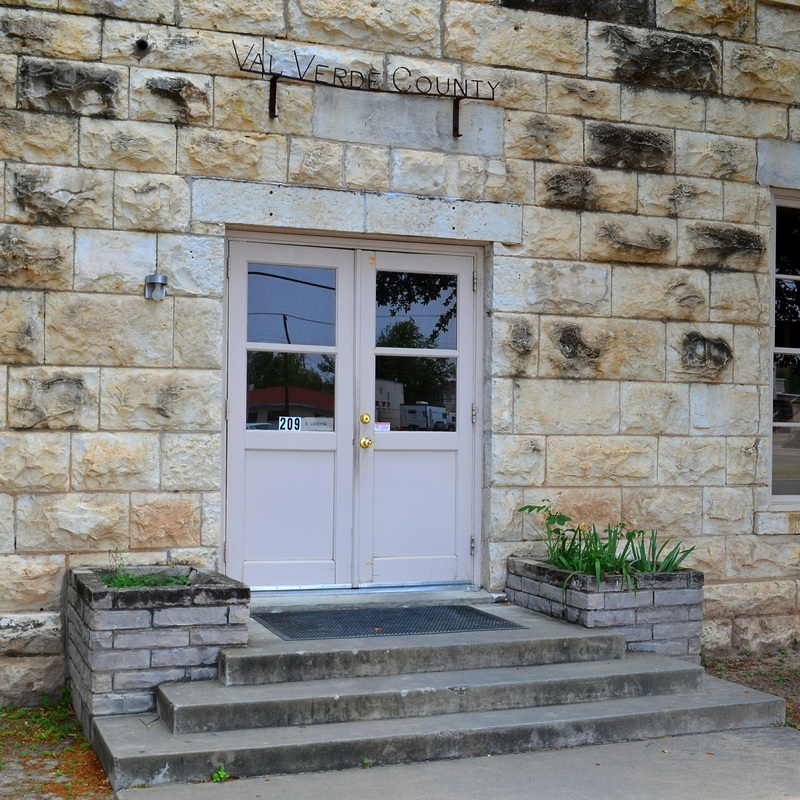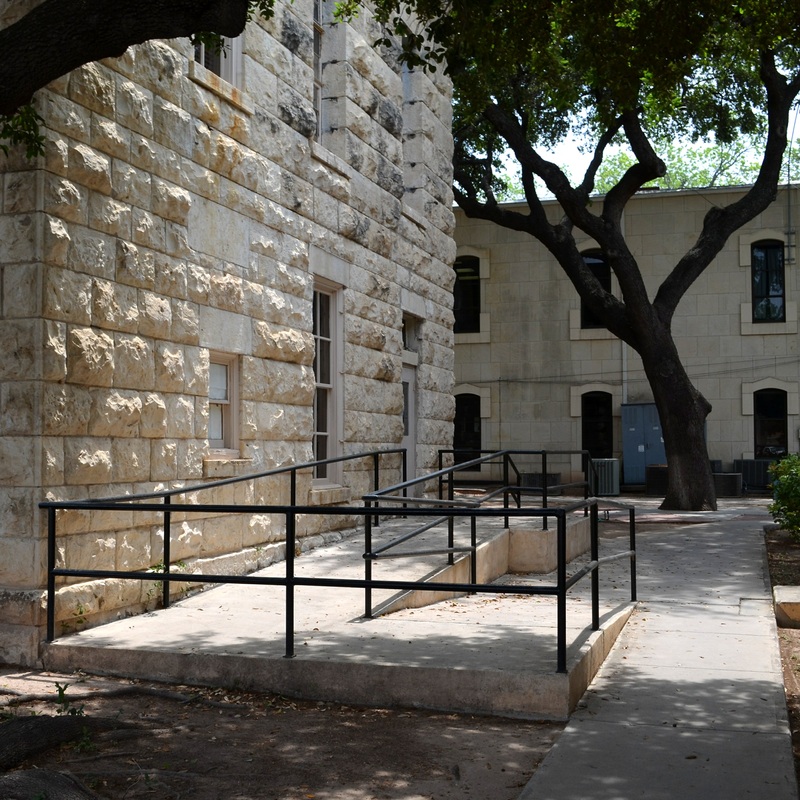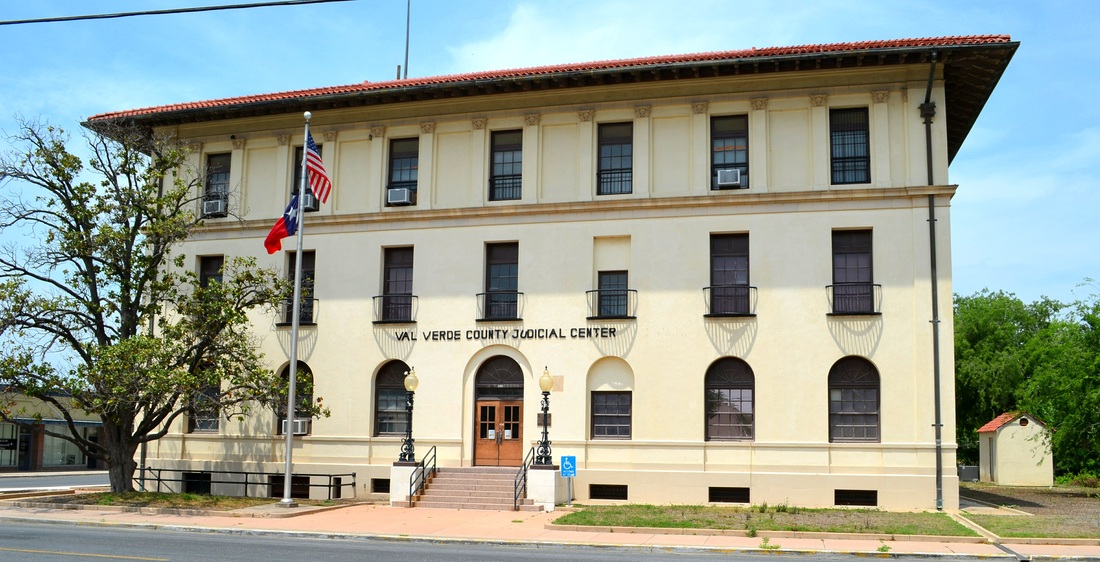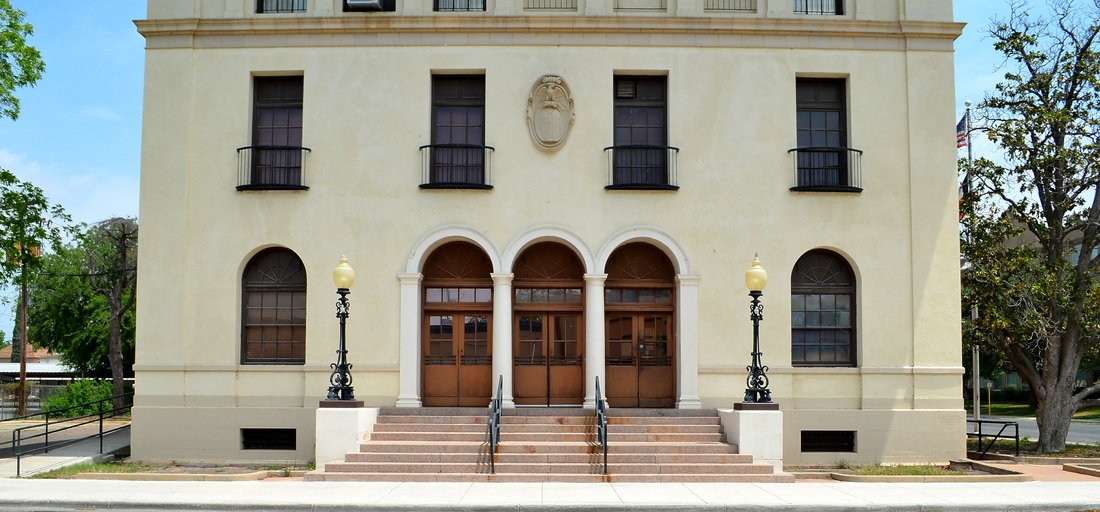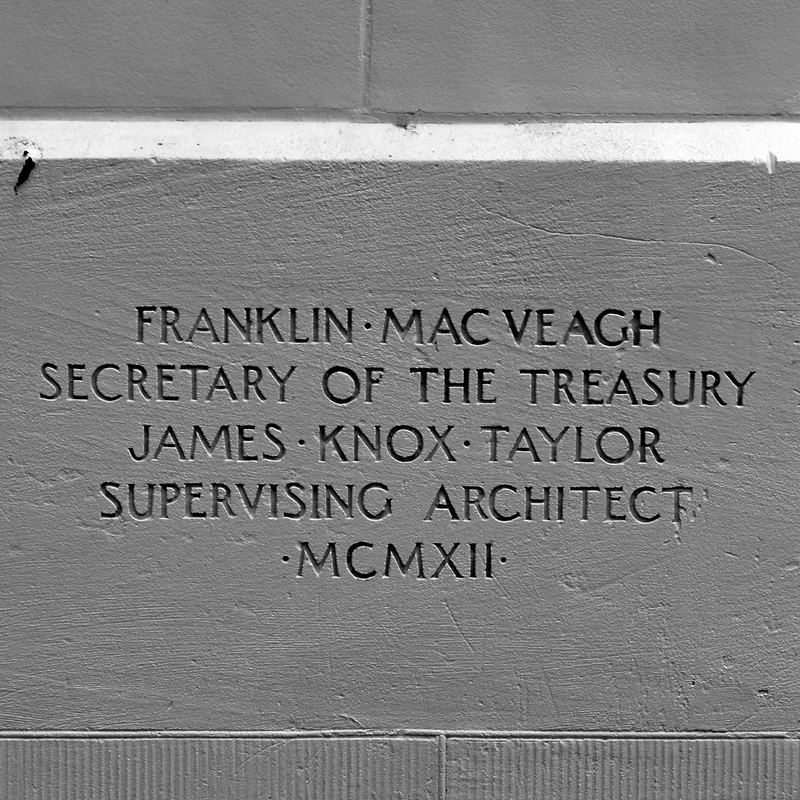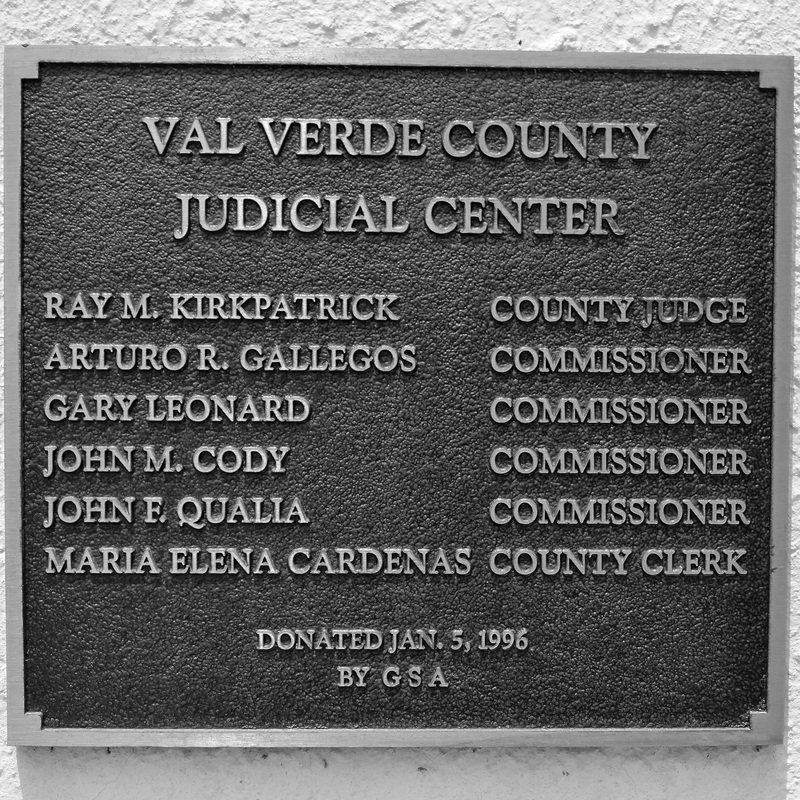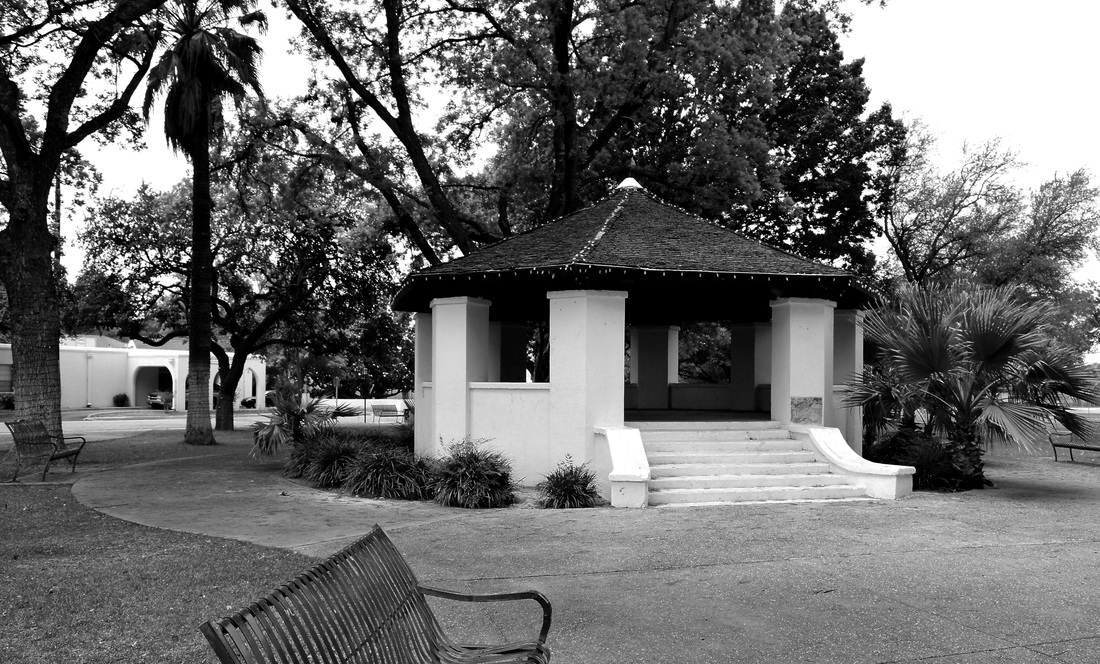198 of 254 Val Verde County Courthouse, Del Rio, Texas. County Population: 49,018
|
"Val Verde County is in southwestern Texas on the Mexican border. Although a part of the county extends west of the Pecos River, more than two-thirds of it is in the Edwards Plateau. Val Verde County comprises 3,150 square miles of sharply dissected massive limestone, which underlies flat terrain. The county is actually a plateau cut by many arroyos and canyons, giving deep relief to the topography. Altitudes vary from 2,248 to 2,925 feet above sea level. The Pecos [River] flows into the Rio Grande in southwestern Val Verde County, and the Devils flows into Amistad Reservoir, on the dammed Rio Grande above Del Rio.
"The community of San Felipe was settled on San Felipe Creek in 1868. The community was sometimes called San Felipe Del Rio (for its proximity to the Rio Grande) to distinguish it from the San Felipe of Austin's colony, and the post office, named Del Rio, was opened in 1872. "In 1883 the Galveston, Harrisburg and San Antonio Railway [the Southern Pacific] was completed into the area, and new settlers came with the easy transportation. Val Verde County was organized from Crockett, Kinney, and Pecos counties in 1885. Its name, which is Spanish for "green valley," came from a Civil War battle. Del Rio became the county seat. Also in the 1885 election Roy Bean of Langtry was elected justice of the peace. Judge Bean became known as the Law West of the Pecos, and he measured out justice from his Jersey Lily Saloon." Julia Cauble Smith, "VAL VERDE COUNTY," Handbook of Texas Online |
I visited Val Verde County and photographed the courthouse in Del Rio on April 26, 2014, a Saturday.
Val Verde County Courthouse 1887The 1887 Val Verde County Courthouse was a fine work of masonry with Classical details. Entrances on each of the sides were emphasized by triangular pediments with modillions and dentils. Above these features, in Second Empire style, were Mansardic roofs with convex curvatures covered with sheet metal and ornamental wrought iron railings, all of which have been removed (in 1915). On one facade statues of the Goddess of Justice and Goddess of Liberty were positioned on pedestals rising from the sides of the pediment. Rising from the center of the temple of justice was a Mansardic roof with decorative ironwork and bull's eye windows containing lone star motifs (stars). At each corner, octagonal towers surmounted by steeply pitched roofs with finials at the apexes added picturesque charm to the building--the roofs, however, have been removed.
|
Val Verde County Courthouse 1915The floor plan, similar to that of numerous other nineteenth-century courthouses, is divided into four quadrants containing offices by intersecting corridors. The district courtroom is located on the second floor. On each facade, a triangular pediment with modillions and details emphasizes the entrance. Paired pilasters with geometric decorative features and broken entablatures further enhance each entrance; above these, single pilasters provide visual support for the pediment. The structure is built of tan-colored limestone masonry. The walls are of pitch-faced ashlar, handsomely articulated by a cut stone water table and a cut stone stringcourse. In 1915, a third floor was added within the original envelope. Although three entrances have been modified, the west entrance remains in original condition. The fully restored (to the 1915 era) courthouse was re-dedicated on July 23, 2004.
|
